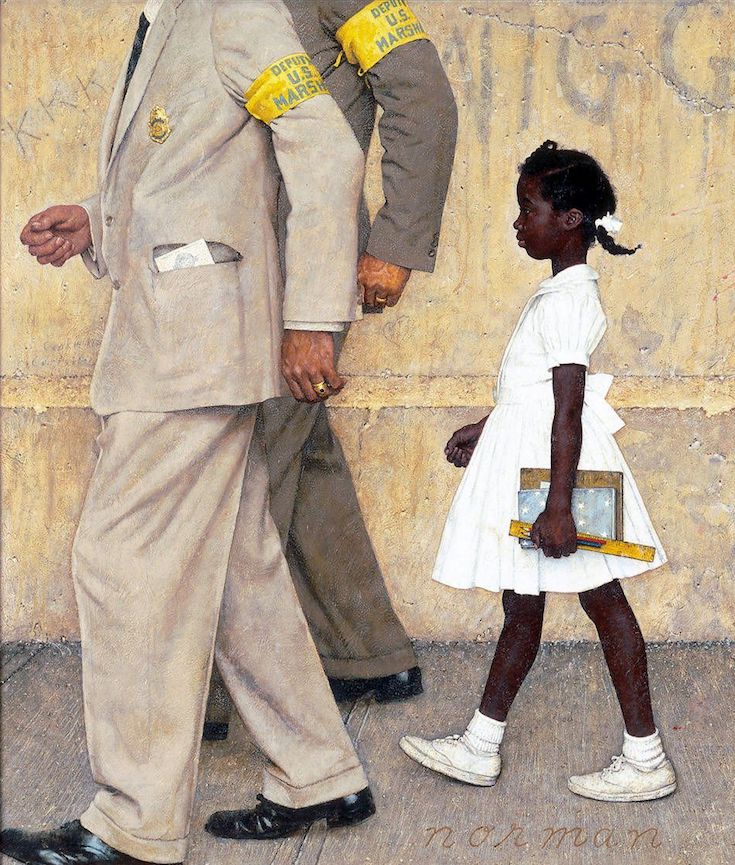Earlier this week, the Baltimore Sun’s Liz Bowie detailed a $54-million school designed by Johns Hopkins University to model “racial diversity” in education. To erect the facility, Bowie explains that Johns Hopkins University, government and nonprofit partners “bought out hundreds of families, moved 1,000 people and bulldozed scores of deteriorating “row houses” in the predominantly Black Maryland city.
Rucker C. Johnson’s 2011 educational assessment suggests these are justified sacrifices. “For Blacks,” writes Johnson, “school desegregation significantly increased both educational and occupational attainments, college quality and adult earnings, reduced the probability of incarceration and improved adult health status.”
[mc4wp_form id=”6042″]
 The Problem We All Live With | Norman Rockwell
The Problem We All Live With | Norman Rockwell
Brown v. Board of Education of Topeka, 347 U.S. 483 (1954), was a landmark United States Supreme Court case in which the Court declared state laws establishing separate public schools for black and white students to be unconstitutional. The decision overturned the Plessy v. Ferguson decision of 1896, which allowed state-sponsored segregation, insofar as it applied to public education. Handed down on May 17, 1954, the Warren Court’s unanimous (9–0) decision stated that “separate educational facilities are inherently unequal.” As a result, de jure racial segregation was ruled a violation of the Equal Protection Clause of the Fourteenth Amendment of the United States Constitution. This ruling paved the way for integration and was a major victory of the Civil Rights Movement, and a model for many future impact litigation cases. However, the decision’s fourteen pages did not spell out any sort of method for ending racial segregation in schools, and the Court’s second decision in Brown II only ordered states to desegregate “with all deliberate speed”. (Wikipedia).


You must be logged in to post a comment.